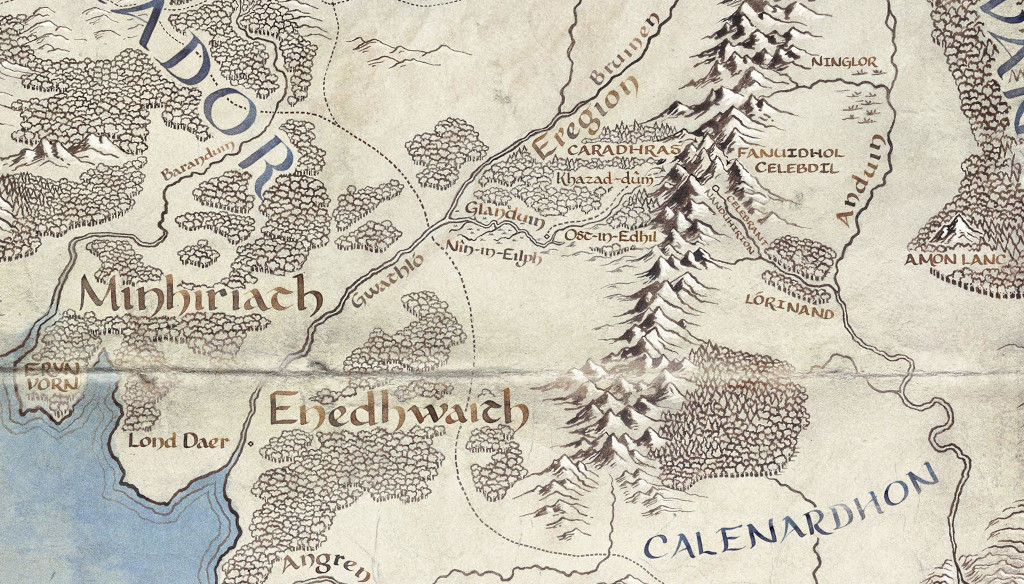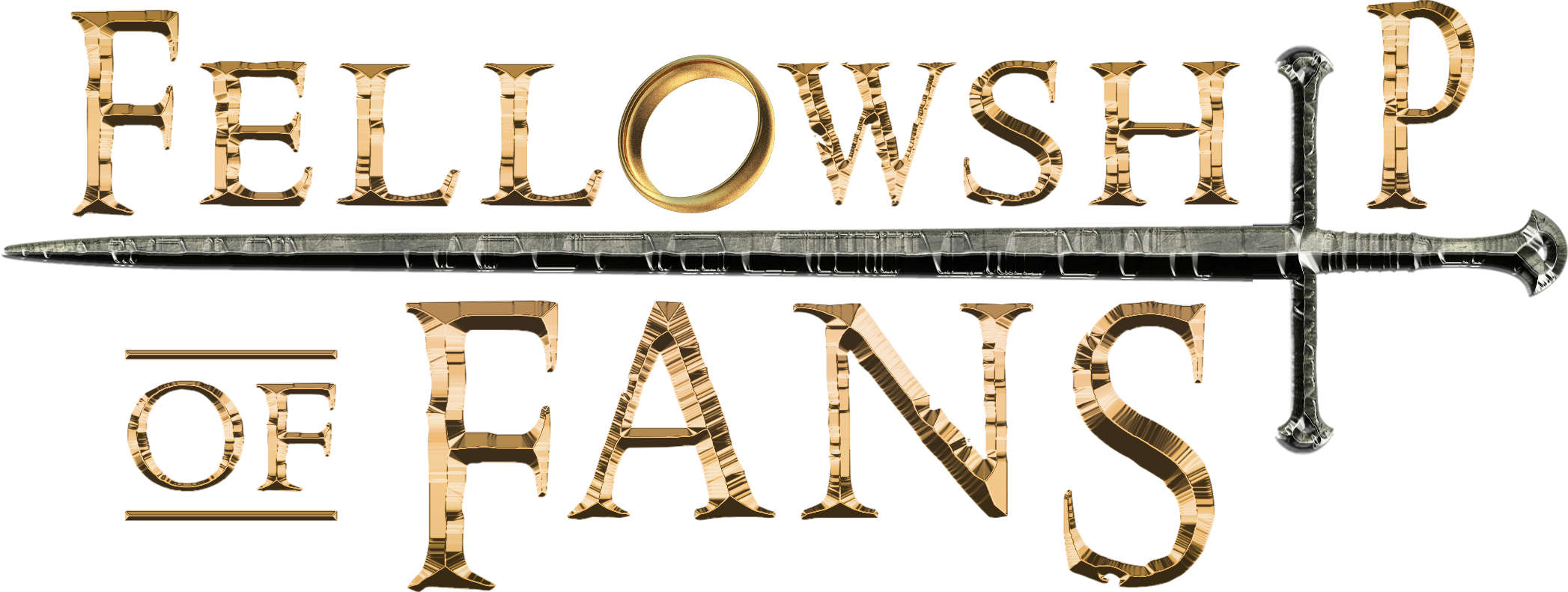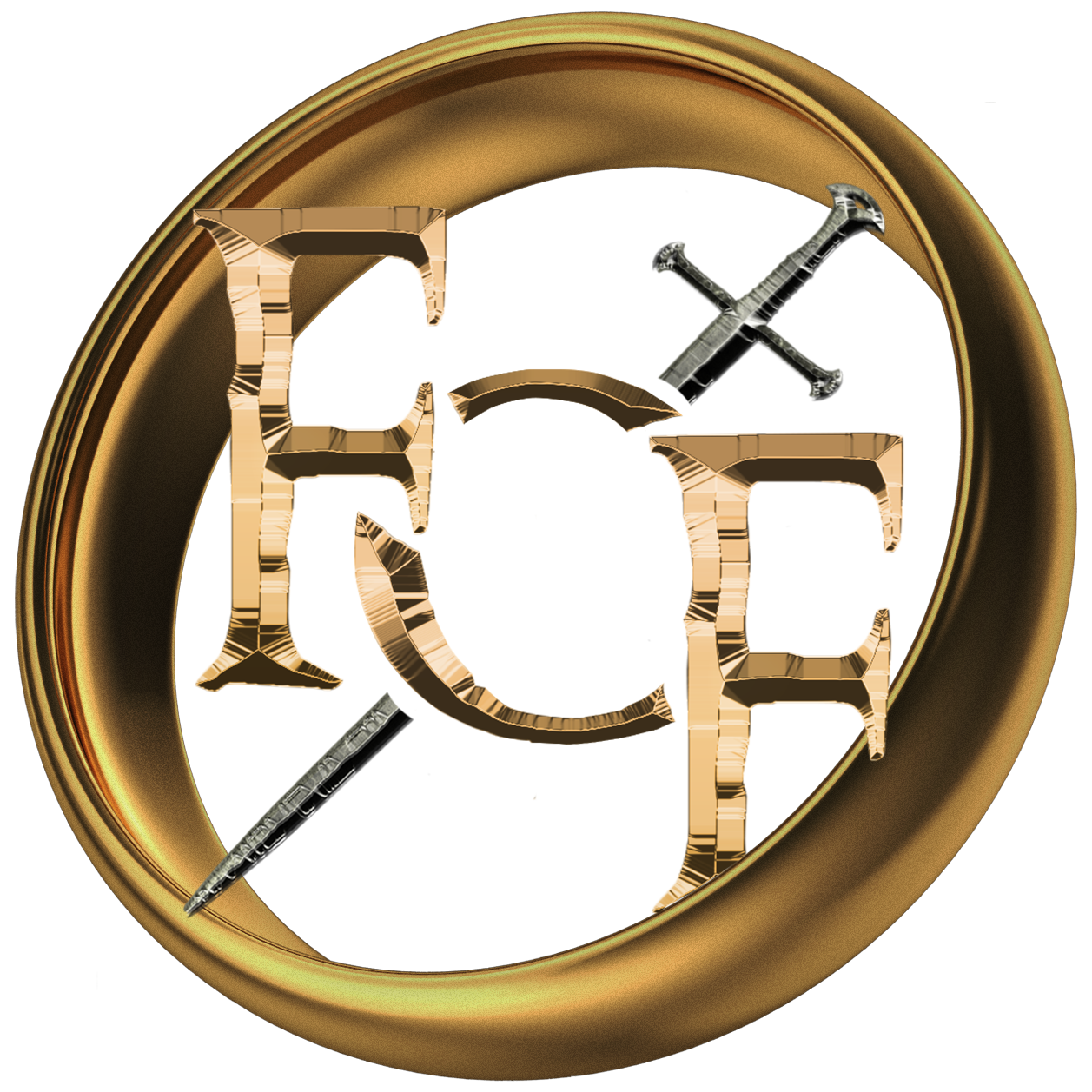
A Second Age Onomasticon – Part I: Places
Amazon Studios’ streaming series, The Rings of Power, is set to premiere in a little over two months from now. Set in a period Tolkien referred to as the “Second Age”, many of the characters are different from those beloved by fans of Tolkien’s most famous works, The Hobbit and The Lord of the Rings. Even the geography is slightly different, and some of the realms and place names are different as well. Given these differences, I’ve decided to develop an Onomasticon of the Second Age in two parts. The first part concerns the places of the Second Age. The second part, which will be released a week from now, will cover the characters of the Second Age. Please note that this is a list of places and characters created by Tolkien himself: “canon” places and characters, so to speak. Part I of the onomasticon does not include Tirharad, a village created for the Amazon series. Likewise, Part II will not include such original characters as Elanor Brandyfoot, Arondir, or Princess Disa. My reasons for the omission are first, that I believe readers will want to be familiar with what Tolkien actually wrote before watching Amazon’s adaptation thereof; and second, because we have only been introduced to a few original characters and one original place name so far, and will undoubtedly be introduced to more—if not during the current marketing phase, then at least as the episodes themselves are released. After the first season concludes, perhaps I will develop an onomasticon of Amazon’s original characters and places created for the show.
What is an Onomasticon?
I have previously written about onomastics, which is the study of names and naming. An onomasticon is essentially just a list of names, either in alphabetical order or in some other kind of order. There are several fields within onomastics. The most well known are toponymy (the study of place names), which is the focus of this post, and anthroponomy (the study of personal names), which is the focus of next week’s post. Of course, there are other fields within onomastics, such as the study of corporate and brand names. Perhaps more relevant to Tolkien are the names of animals (such as “Shadowfax”), of weapons (such as Gil-galad’s spear, “Aeglos”), of ships (such as Vëantur’s ship Entulessë, or “The Return”), of inns and taverns (such as “The Green Dragon”), and of guilds (such as Númenor’s “Guild of Venturers” or the Gwaith-i-Mírdain of Eregion). However, these are much less in number than the names of people and places, and therefore a dedicated list is less warranted. Although I will attempt to avoid major spoilers for those who may be unfamiliar with Tolkien’s lore, there are certain characters and realms that are prominent at some point during the Second Age, but not so much later on. For the place names of the Second Age, I have decided to arrange them roughly geographically, beginning from the far northwest of Middle-earth, moving east and southwards, and then to other islands and continents outside of Middle-earth.
Tolkien’s World and Middle-earth
“Outside of Middle-earth?” you might ask. “How is that possible?” In fact, Middle-earth is not the name of the planet on which the stories of Tolkien’s legendarium take place, though it is doubtful that many of Tolkien’s characters would have been aware they were on a “planet” anyway. Tolkien used the Quenya word Eä to refer to the universe, Arda to refer to the world (which is, in fact, our own Earth in some mythical past), and Ambar to refer specifically to the habitable surface of the world. Properly speaking, Middle-earth (Quenya Endórë) is the name of a large continent, corresponding to the so-called “Old World”, which comprises the continents of Europe, Asia, and Africa. Of course, most of Tolkien’s characters would also not be aware they were on such a large continent, but only aware of that portion of it nearest to them.
The Northern Waste
The Northern Waste is a cold, icy region in the far north of Middle-earth. It is also called by the Sindarin name Forodwaith (“Northern Folk”), which is also used to refer to its inhabitants. Tolkien himself wrote little or nothing related to this region during the Second Age.
Lindon
The Elven kingdom of Lindon in the far northwest of Middle-earth was a prominent realm during the Second Age. Located west of the Blue Mountains (Sindarin: Ered Luin), Lindon was all that remained above the sea, apart from a few islands, of the region of Beleriand after the War of Wrath that concluded the First Age. Beleriand had been populated mostly by Elves, in particular the Sindar, as well as the Ñoldor who had left Valinor, and finally the Laiquendi, or Green Elves, who had actually settled the area that became Lindon, but were later outnumbered by the other survivors of Beleriand. Lindon was founded at the beginning of the Second Age and ruled by the High King Gil-galad.
Gulf of Lhûn
The Kingdom of Lindon was bisected by the Gulf of Lhûn (or Lune), and all its important cities were on its shores.
Forlond and Forlindon
The portion of Lindon north of the Gulf of Lhûn was called Forlindon. It included the city of Forlond (Sindarin for “North Haven”), located on the north shore of the Gulf of Lhûn, which was the residence of Gil-galad. For this reason Forlond has been considered the capital of Lindon, although it is possible that the actual capital was elsewhere, such as at Mithlond, or even that the capital moved with the King.
Harlond and Harlindon
The portion of Lindon south of the Gulf of Lhûn was called Harlindon. It included the city of Harlond (Sindarin for “South Haven”), located on the south shore of the Gulf of Lhûn. In at least some of Tolkien’s many versions of the story of Galadriel and Celeborn, Celeborn was the Lord of Harlindon, and many of the Sindar who escaped the destruction of Beleriand chose to live in Harlindon.
Mithlond
Mithlond (Sindarin for “Grey Haven”) was located on the Gulf of Lhûn at the mouth of the River Lhûn. Círdan the Shipwright was the Lord of the Havens. Whether Mithlond was the capital of Lindon at any point during the Second Age is not clear. However, by the end of the Third Age it seems to have become the most important city in Lindon.
Eriador
Eriador is a region in the northwest of Middle-earth. It is perhaps most notable as the location of the Shire of the Hobbits in the Third Age. However, the Shire did not exist in the Second Age. Eriador was largely populated by Men, many of whom were distantly related to the Edain of the First Age, and the Númenóreans of the Second Age. However, there were also populations of Elves as well.
Lake Nenuial
Nenuial (Sindarin for “Lake Twilight”), also known as Lake Evendim, was the home of Galadriel, Celeborn, and many of their followers, for a time in the early Second Age, according to at least one of Tolkien’s versions of the story. They later moved to Eregion in the year 750 of the Second Age.
Imladris
The Elven settlement of Imladris (Sindarin for “Rivendell”) was a settlement of largely Ñoldor Elves founded by Elrond during the course of the Second Age.
Bree
The village of Bree (from a Brythonic word meaning “hill”) was founded during the course of the Second Age by refugees who fled northward from Dunland to escape troubles caused by Sauron and his followers. At this time there were no Hobbits in the area.
Arnor
Arnor (Sindarin for “Land of the King”) was a Kingdom of Men founded by Elendil the Tall late in the Second Age, which flourished particularly in the early Third Age. Aragorn was descended from the line of the Kings of Arnor, and the Rangers were the remnant of this Kingdom.
Annúminas
Situated on the shores of Lake Nenuial, Annúminas (Sindarin for “Tower of the West”) was the capital of Arnor, founded late in the Second Age.
Amon Sûl
Amon Sûl (Sindarin for “Hill of Wind”), also known as Weathertop, was a hill in Eriador, and in Arnor. It was the site of a watchtower, later ruined, from which Elendil observed the mobilization of the Elves of Lindon to join the Last Alliance of Elves and Men.
Minhiriath
Minhiriath (Sindarin for “Between the Rivers”) was a region in the south of Eriador. It was sparsely populated and largely forested during the early Second Age.
Enedhwaith
Enedhwaith (Sindarin for “Middle Folk”, or “Middle Region”) was a region in the south of Eriador. It was largely forested during the early Second Age and inhabited by a group of people called the Gwathuirim, who were the ancestors of the Dunlendings.
Gwathló River
The Gwathló (Sindarin for “Shadow Flood”, or “Greyflood”) was the river that separated Minhiriath and Enedhwaith. Its mouth was the site of the first Númenórean settlement in Middle-earth, and a decisive battle of the Second Age was fought on its banks in the year 1701 of the Second Age.
Vinyalondë
The mouth of the Gwathló River was the site of the first permanent Númenórean settlement in Middle-earth, which was named Vinyalondë (Quenya for “New Haven”). It was established by Aldarion, heir to the Sceptre of Númenor, some time between S.A. 750 and 800 as a site for felling trees for the construction of ships. By the time of the Battle of the Gwathló River, its name had been changed to the Sindarin Lond Daer (“Great Haven”), which later became Lond Daer Enedh (“Great Middle Haven”). On the map released by Amazon Prime, the settlement is called Lond Daer.
Tharbad
Tharbad was a Númenórean settlement at a ford (and later a bridge) of the Gwathló River, upstream from Vinyalondë. Aldarion met Galadriel at Tharbad while she was living in Eregion. In S.A. 1701 Tharbad was the site of the Battle of the Gwathló River.
Eregion
Eregion (Sindarin for “Land of Holly”) was a realm in Eriador populated largely by Ñoldor Elves who had left Lindon, and who had formed an unusually friendly and cooperative relationship with the neighboring Dwarves of Khazad-dûm. Eregion was founded in S.A. 700 or 750, and was governed by the Elf Celebrimbor, who was called Lord of Eregion.
Ost-in-Edhil
Ost-in-Edhil (Sindarin for “Fortress of Elves”) was the capital city of Eregion.
Khazad-dûm
Khazad-dûm (Khuzdul for “Dwarf Mansions”) was a realm of Dwarves located under the Misty Mountains. It was later better known as Moria (Sindarin for “black abyss”) in the Third Age.
Calenardhon
Calenardhon (Sindarin for “Green Region”) was the name of the land that later became Rohan in the Third Age, a wide plain situated between the Misty Mountains and the White Mountains. It was important as a thoroughfare connecting Eriador to regions further east in Middle-earth. It was likewise the site of various battles, including a significant battle in the year 1701 of the Second Age.
Isengard
Isengard was a fortress at the south end of the Misty Mountains, on the north of the Gap of Calenardhon. It was built by Gondorians in the late Second Age.
Aglarond
Aglarond was a fortress in a valley of the northeastern White Mountains, on the south of the Gap of Calenardhon. It was also built by Gondorians, possibly in the late Second Age. After the Rohirrim settled Calenardhon, they renamed the fortress Súthburg, and then later the Hornburg. It was this fortress that guarded the valley later known as Helm’s Deep.
Rhovanion
Rhovanion (Sindarin for “Wild Land”) is the “Wilderland” of The Hobbit. It was located on the other side of the Misty Mountains from Eriador, Eriador being on the west and Rhovanion on the east. Rhovanion was inhabited largely by the Northmen, Men who were related to the Númenóreans and the Men of Eriador, and who were the ancestors of the Rohirrim, the Beornings, and the folk of Dale and Laketown. Rhovanion was also inhabited by Longbeard Dwarves (Durin’s folk) in the hills and mountains on the north and west, and in the forests by Silvan Elves and Ents.
Fangorn Forest
Fangorn (Sindarin: “Treebeard”) Forest was a forest where the Ents lived, though it’s possible they ranged more widely during the Second Age than they did at the end of the Third Age. The Ent-Wives were also present and lived not too far from the Ents during the Second Age
Dagorlad
Dagorlad (Sindarin for “Battle Plain”) was a plain north of Mordor where numerous battles were fought, notably one at the end of the Second Age.
Greenwood the Great
Greenwood the Great (Sindarin Eryn Galen) was a large forest in Rhovanion, known during the time of The Hobbit as Mirkwood. During the Second Age it was an ordinary forest, not as feared as it became during the Third Age. It was also somewhat larger, as the East Bight had not been carved out of it yet.
Woodland Realm
The Woodland Realm was a realm of Nandor, or Silvan Elves, situated in Greenwood the Great. It was ruled by Sindarin kings during the Second Age, however, first by Oropher, and then by his son Thranduil, the “Elven-king” of The Hobbit.
Amon Lanc
Amon Lanc (Sindarin for “Naked Hill”) was the first capital of the Woodland Realm. However, Oropher abandoned it and moved further north in the Greenwood. During the Third Age Sauron occupied Amon Lanc, and it became Dol Guldur (Sindarin for “Hill of Sorcery”).
Emyn Duir
The Emyn Duir (Sindarin for “Dark Mountains”), were a mountain range in Greenwood the Great. Disturbed by reports of Sauron’s activity in the south, Oropher decided to abandon Amon Lanc and chose a location in the Emyn Duir as his new capital. Later on, the capital was moved yet again to the location where the Dwarves were held captive in The Hobbit.
Lindórinand
Lindórinand (“Vale of the Land of Singers” in Nandorin) is one of the names Tolkien invented for the realm known in The Lord of the Rings as Lothlórien, or Lórien. He also called it Lórinand (“Valley of Gold” in Nandorin), which is the name that appears on the map released by Amazon Prime. The Quenya name is Laurelindórenan, or “Valley of Singing Gold”. As Tolkien developed the stories of the Second Age, he decided that the famous mallorn trees of Lothlórien were actually not native, but were introduced by Galadriel from a Númenórean source, which is why he decided to remove the “gold” element from Lindórinand. Lindórinand was inhabited largely by Nandor (Silvan Elves), but its King Amdír was of Sindarin ancestry. Amdír seems to be the same person referred to as Mal-galad in one account. His son was Amroth, although in some earlier versions of the story Amroth was the son of Celeborn and Galadriel, or the son of Celeborn and the step-son of Galadriel, in one account.
Gondor
Gondor (Sindarin for “Stone Land”) was a kingdom of Men founded by the brothers Isildur and Anárion in the late Second Age. It bordered Mordor to the east, with which it was often at war.
Edhellond
Edhellond (Sindarin for “Elf Haven”) was a harbor founded by Falathrim (Sea-going Sindar, the folk of Círdan the Shipwright) in what later became Gondor at the end of the First Age. The area around Edhellond came to be associated with Amroth (of Lothlórien) in the Third Age.
Pelargir
Pelargir (Sindarin, probably meaning something like “Enclosure of Royal Ships”) was a city founded by Númenóreans at the mouth of the Anduin River in S.A. 2350. When the realm of Gondor was founded, Pelargir was its chief city. It was in and around Pelargir that the dialect of Adûnaic known as the Common Speech, or Westron, developed.
Osgiliath
Osgiliath (Sindarin for “Fortress of Stars”) was the capital city of Gondor. It was built on the Anduin River, upstream from Pelargir, when Gondor was founded in the late Second Age.
Minas Ithil
Minas Ithil (Sindarin for “Tower of the Moon”) was a city built east of Osgiliath, near the border of Mordor. It was Isildur’s residence.
Minas Anor
Minas Anor (Sindarin for “Tower of the Sun”) was a city built west of Osgiliath, on the east flank of the White Mountains. It was Anárion’s residence.
Mordor
Mordor (Sindarin for “Black Land”) was a region enclosed by mountains, situated near what later became Gondor. In the early Second Age Sauron lived mostly in the East. However, word reached him of the Númenóreans (Elf-friends and descendants of the Edain of the First Age) exploring the coasts of Middle-earth, so he moved to Mordor to keep a closer eye on them, as well as on the Elves who were expanding further south and east in Eriador. Sauron founded Mordor in S.A. 1000, but Shelob was already there.
Orodruin
Orodruin (Sindarin, probably meaning “Fiery Red Mountain”) was a volcano in Mordor where the One Ring was forged. It existed before the Second Age, but Sauron apparently had the ability to awaken it from dormancy.
Barad-dûr
Barad-dûr (Sindarin for “Dark Tower”) was the fortress built by Sauron initially in the Second Age. It was only completed after he finished the One Ring, and its foundations were strengthened by its power.
Harad
South of Gondor was a region called Harad (literally meaning “South” in Sindarin). It contained people referred to as the Haradrim, who were often at odds with Gondor, and who had fallen under the sway of Sauron by the end of the Second Age.
Umbar
Umbar was a city on the coast of Harad. It became a colony of the Númenóreans. Its inhabitants were often at odds with the Númenóreans who had settled Pelargir and other parts of Gondor.
Khand
Khand was a land south and east of Mordor. Its inhabitants fought for Sauron in the War of the Ring at the end of the Third Age.
Rhûn
Rhûn (Sindarin for “East”) was a land to the east of Rhovanion and northeast of Mordor. Sauron dwelled there early in the Second Age, and its inhabitants (known as “Easterlings”) became early followers of Sauron.
Númenor
Númenor (from the Quenya for “West Land”) was a large island in the Great Sea, set apart for the descendants of the Edain, Men who had fought alongside the Elves during the First Age. Place names in Númenor were typically in Quenya. The island was shaped like a five-pointed star and had a high mountain, Meneltarma, in the center. It also had six major regions:
Mittalmar – Center
Orrostar – East
Forostar – North
Andustar – West
Hyarnustar – Southwest
Hyarrostar – Southeast
Emerië
Emerië was a pastoral region of Númenor in the southwest of Mittalmar.
Armenelos
Armenelos was the capital city of Númenor, located in Mittalmar on a hill to the southeast of Meneltarma.
Rómenna
Rómenna (Quenya for “Eastwards”) was Númenor’s major port, located in the east of the island.
Andúnië
Andúnië (from Quenya andúnë, meaning “sunset” or “west”) was a city in the northwest of the island. The people of Andúnië tended to be friends of the Elves.
Eldalondë
Eldalondë (Quenya for “Elf Haven”, equivalent to Sindarin Edhellond) was a port in the west of the island, where Elves often visited from Tol Eressëa.
Aman
Aman (Quenya for “Blessed Land”, possibly from a Valarin word) was a continent in the far west of Arda, where the Valar (similar to angels or demigods) lived, along with many Elves, the so-called Calaquendi, or “Light Elves”.
Valinor
Valinor (Quenya for “Land of the Valar”) was the land of the Valar on Aman.
Tirion
Tirion (Quenya for “Watch-tower”) was the city of the Ñoldor Elves, situated on a hill in a narrow valley near the east coast of Aman. It is probably the city featured in the first official still photograph from the Amazon show.
Tol Eressëa
Tol Eressëa (Quenya for “Lonely Isle”) was an island off the east coast of Aman, the home of the Elves who sailed West from Middle-earth.
Avallónë
Avallónë was a city on the east coast of Tol Eressëa.




Mike
July 9, 2022 at 6:23 pmone really bumps me personally, especially in the last teaser, first I thought Francis Underwood comes right around the corner when I heard the sound, the background music is something of a mix of House of cards and Designated Survivor. I pray and really hope that they finally bring something where you also learn in the musical level in which direction it goes, because as in the teaser could really tip very quickly in the bottle direction, music, sound is so important.
One imagines this teaser only with the old music pieces of Howard Shore.
But please your music that is I’m sorry if I have to say that so hard, it’s shit, impossible.